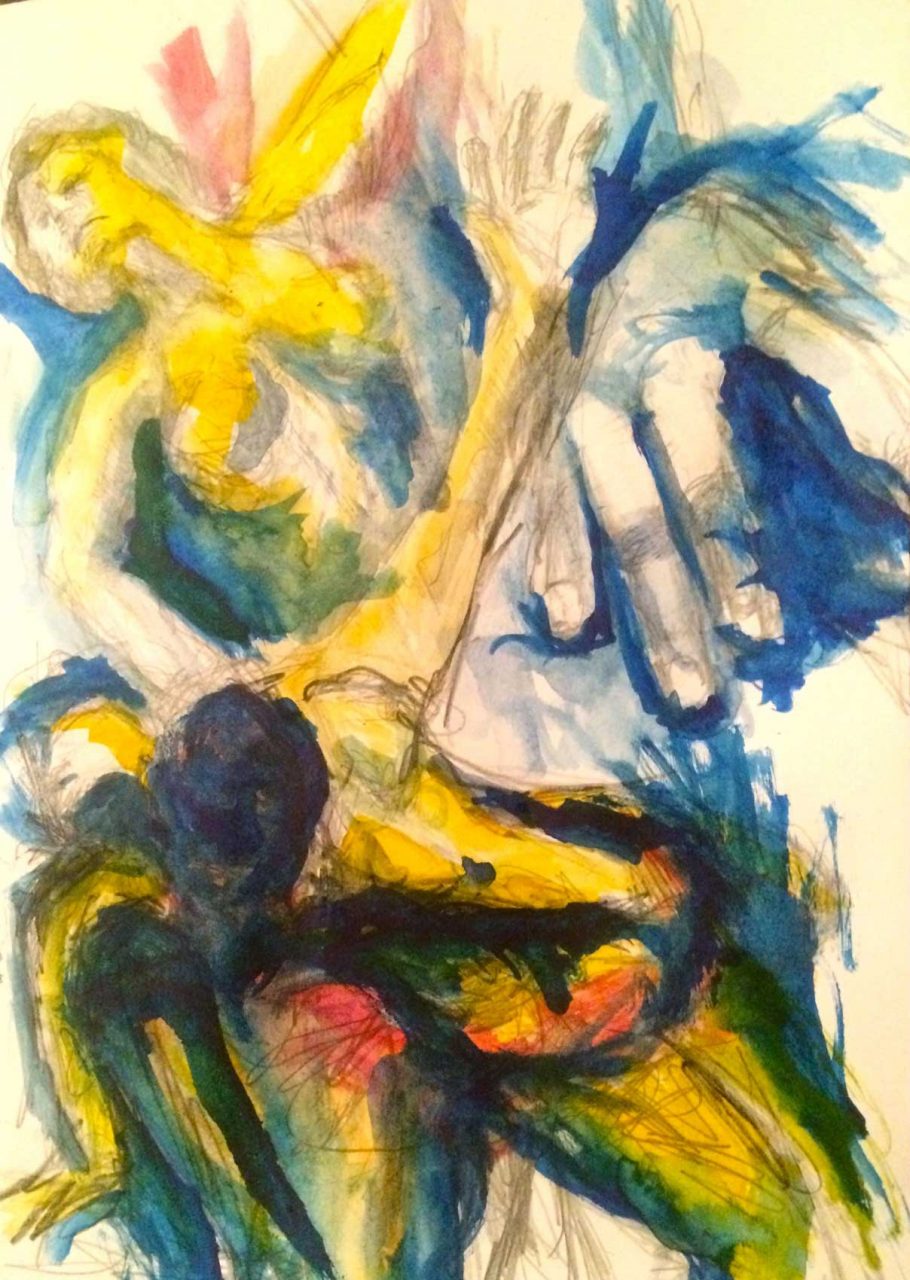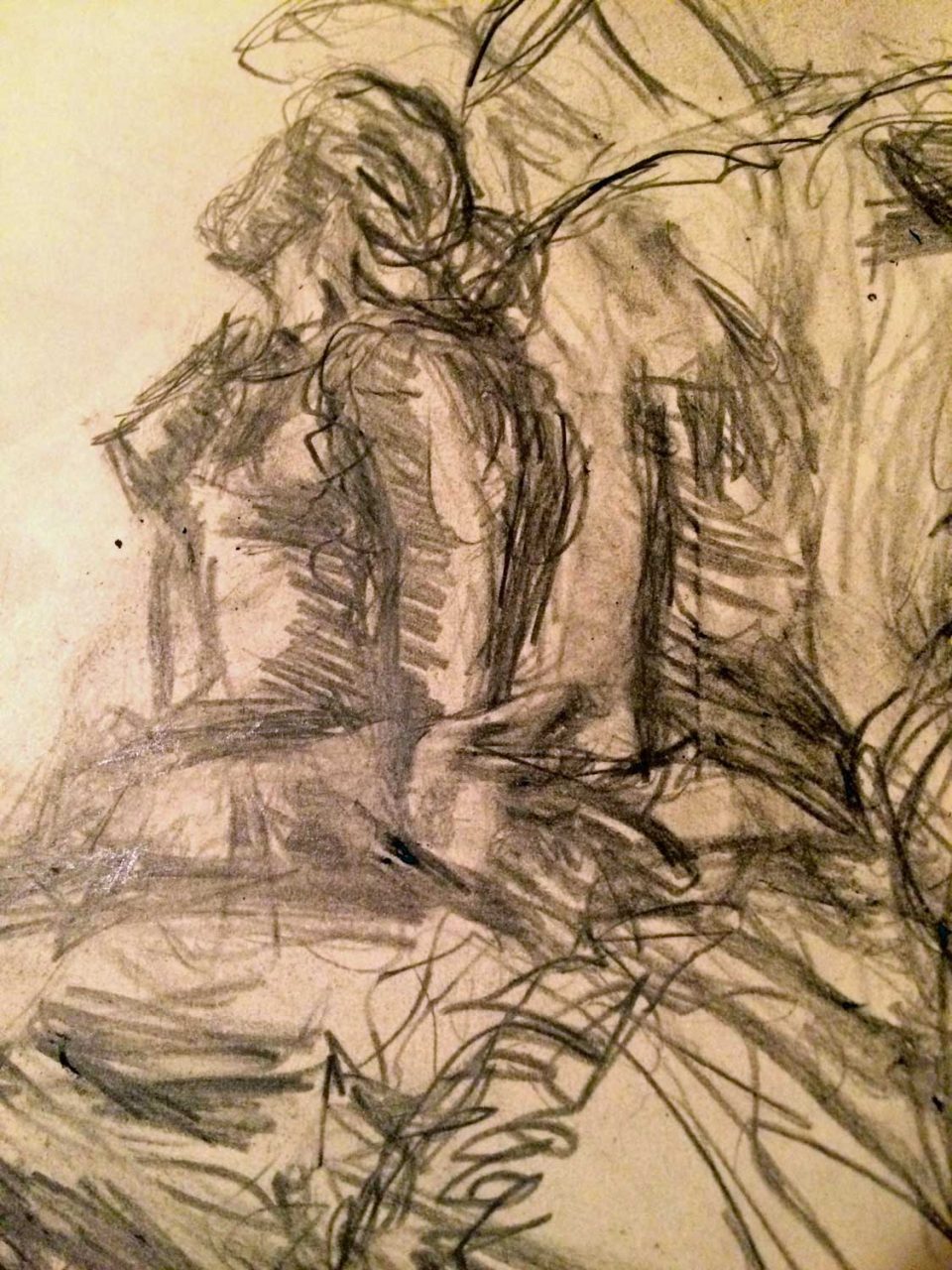Lisa Moore has written two collections of stories, Degrees of Nakedness and Open, and three novels, Alligator, February and Caught, as well as a stage play. We featured her story ‘The Fjord of Eternity’ in Granta 141: Canada. In this series, we give authors a space to discuss the way they write – from technique and style to inspirations that inform their craft.
I started reading Orlando by Virginia Woolf in Florence, Italy, three weeks ago. I fell asleep with the book held upright in my hands. I woke with it under my cheek, pages crumpled and squished. I read it in cafes drinking hot chocolate, thick as tar, so rich and chocolatey that for a second or two I experienced synesthesia – I was drinking the novel and reading the hot chocolate. The sugar high was inseparable from the gorgeousness of Woolf’s prose. Basically, I fell in love with the book. Or the hot chocolate.
The beginning of Woolf’s novel is set during the Renaissance. I was spending almost two weeks alone. For three or four hours each day, I wandered around Florence doing sketches of Renaissance sculptures.
I’d also made a New Year’s resolution to do a portrait every day for a year. I wanted to explore what a ‘likeness’ is, and how the act of capturing a person through a portrait might compare to writing a character.
By the end of January I was getting better at proportion. I was able to think more about the quality of the marks I was making, (for example, the silvery lightness of a pencil sketch, or the happy accidents of a bleeding watercolour).
But ‘likeness’ still, quite often, evades me. How can it be that everything is right – the angle of a cheekbone, the set of a chin, the distance between the upper lip and the nose, the gleam of light on a tear duct, or in the pupil of the eye – yet the person is not recognizable? Doesn’t look anything like her.
I draw from life, the model sitting in front of me. I raise my pencil an inch and the model lifts her head. I tell the model not to talk so I can get the exact shape of the lips and how they meet. It’s an intimate and charged experience. Sometimes, when I’ve been lucky, I’ve ended up with something of a ‘likeness’. The essence of the person, or at least the essence of our encounter together, the intensity of the exchange, is there on the page. It shifts easily out of focus, blurs, flickers in the corner of the viewer’s eye. How does this compare to writing a character so the reader knows them, however much a character might be (must be?) an unstable construction, flickering in and out of view?

*
I had studied many of the sculptures and the architecture I was seeing in the museums and palazzos of Florence in a foundation art history course at the Nova Scotia College of Art and Design in the mid-eighties.
Our textbook in that foundation year was Janson’s History of Art. Yup, the entire history of art from the get-go. Compressed time, beauty, politics, patronage, desire: what is art and why has everybody been making it for so long?
But that was nothing compared to the altering experience of reading John Berger’s Ways of Seeing. Berger’s book, along with the television series of the same name was revolutionary (in one of the episodes, as I remember it, Berger stands before the Mona Lisa and suddenly whips out a knife and slices through the canvas! And then Berger demands we consider the aura of a masterpiece and compare the feelings it evokes with a mere reproduction).
Of course we’ve been duped, it isn’t the real Mona Lisa, but how does the reproduction differ from the original? Reading Berger was like having someone take a jackhammer to the inert marble chunk of my imagination and wake it up, shape it.
And during my nearly three weeks in Florence, there was most of the art I had studied in my early 20s, but had never seen ‘in the flesh’.
These museums blocked with Botticellis and Raphaels and Caraveggios, gold cherubs jammed into the moulding. If you’re willing to get a kink in your neck, you can watch the gods play out their wars, dashing lightning bolts all over the ceilings.
The David is pretty good: ripped, the curls, the nose, shiny from so much polish.
But Michelangelo’s Prisoners sculptures interested me the most – blocks of marble only partially chiseled into, as though the artist were hacking away to free the man inside the stone before he suffocates.
A man trying to burst free of a massive block of stone; you can see him writhing – here a knee, here a beard, here an elbow, searching the room with one wild eye, an eye suddenly very much alive, roving crazily around to see the world he’s busting into, which happens to be 2018: Trump, Trudeau, Brexit, pipelines in Canada, a hydroelectric dam in my home province of Newfoundland and Labrador that will create enough methylmercury to destroy the food security of the Indigenous people living adjacent to the project, as well as the energy security of the entire province, and skinny polar bears, receding ice caps, and so on – and with his other eye, still inert, still blind, this thrashing prisoner, stuck in the stone, is casting back through geological time, through climate change and we’ve gone too far, through cave men and, apes and fish crawling out of the sea gasping with their new lungs, all the way back to the big bang – the sublime.

*
Orlando is a faux biography. The narrator tries to capture the mental anguish of the young poet’s efforts to become a writer. Orlando is wealthy and powerful, he certainly doesn’t need to be a writer (who needs that?) but he’s obsessed, he cannot escape it.
He wants to be a writer, and Woolf captures what it feels like to try to write, and to get it wrong, the feeling of wanting recognition and the folly in that. The desire to capture a character and get most of the things exactly right, the neighbourhood where a character lives, their socio-economic status, what they’d had for breakfast, and whether the toast was cold, butter or margarine, and still manage to fail at bringing that character to life. Still manage to end up with a marble look-alike rather than a living, breathing, flitting ‘likeness’.
Woolf writes about Orlando’s desire to contain memory on the page, or let it burst through, flood everything and everywhere, like a broken dam.
She says this about character: ‘The mind receives a myriad of impressions, trivial, fantastic, evanescent, or engraved with the sharpness of steel. From all sides they come, in an incessant shower of innumerable atoms . . . Let us record the atoms as they fall upon the mind in the order in which they fall, let us trace the pattern, however disconnected and incoherent in appearance, as each sight or incident scores upon the consciousness.’
Woolf recognizes the instability of any likeness; she celebrates it.
Sometimes I think it’s impossible to make a character three-dimensional in a novel, or in a drawing or even a faux biography; the best to hope for is a shadow, a glimpse, an impression, because life itself is too complex, too lush, too magical, there are too many moments, too many tangents!
*
Okay, this happened: like I said, I was alone for almost two weeks and I went into a gelato shop, and these shops, the heaps of gelato are sculpted, and the shop is an artwork all in itself, and it’s crowded, shoulder to shoulder, people jostling each other. I choose a flavour and get in the line up to pay, and the man behind the counter takes my money, and then he’s taking the money of the woman behind me, and because it feels like I haven’t used my voice in days, haven’t spoken, been alone, all I’ve been doing is reading, I ask him: What’s your favourite flavour?
And he snaps at me: One moment!
He is counting out change and I’ve interrupted him, and: One Moment!
I feel humiliated. What the hell was I thinking What’s your favourite flavour and next thing he leaves the line of customers and comes around the corner of the counter and shoulders his way through the crowd, and goes behind the glass where all the gelato is heaped and he says: I will show you.
And he’s back with a sundae spoon. It’s a lime green plastic spoon, with a longish handle, and everybody is crowded around us, and the eyes on him, big, sexy, chocolate eyes. Looking deep into my eyes, he is, and he opens his mouth, involuntarily, sort of encouraging me to open my mouth, I realize he is going to actually feed me in the middle of this shop floor. People have stopped jostling, they are watching, crowding in.
You will see, he whispers to me, coaxing. Just taste this.
I feel my mouth open, involuntarily, mimicking his mouth.
But I realize, at the very last second, before the gelato touches my lips, that if that gelato is as good as he said, and if I let him feed me like that, well, I will never leave Florence, I will stay there forever, prisoner of the Renaissance, I’ll abandon everything I know of myself for this guy with the spoon! So I quickly and awkwardly took the spoon from his hand. Spell broken. The crowd gets on with their jostling. And the gelato is every bit as good as he promised.
*
Orlando finds himself up against this kind of problem when he tries to write: ‘Thus, the most ordinary movement in the world, such as sitting down at a table and pulling the inkstand towards one, may agitate a thousand odd, disconnected fragments, now bright, now dim, hanging and bobbing and dipping and flaunting, like the underlinen of a family of fourteen on a line in a gale of wind.’
And who wouldn’t want to be under that linen, face turned up, tickled by all those petticoats? Who doesn’t want to get it all down, capture something alive for posterity, or the present? Who doesn’t want to at least try for that kind of likeness?
All drawings courtesy of the author







